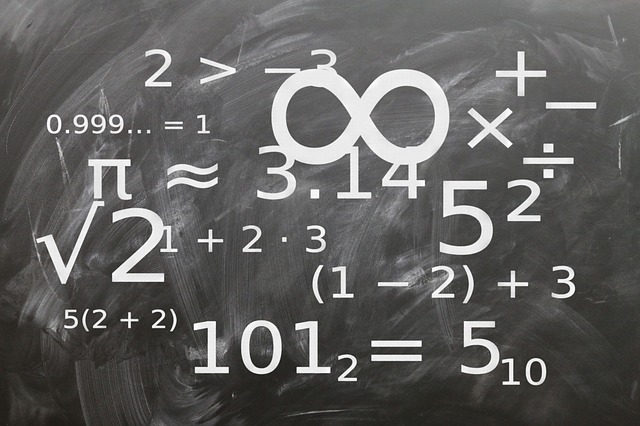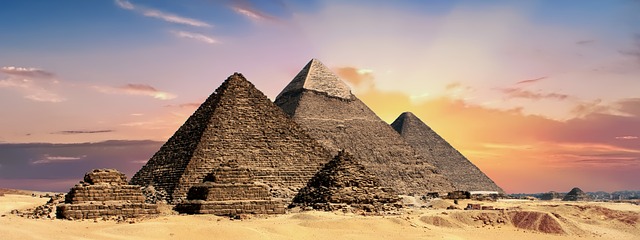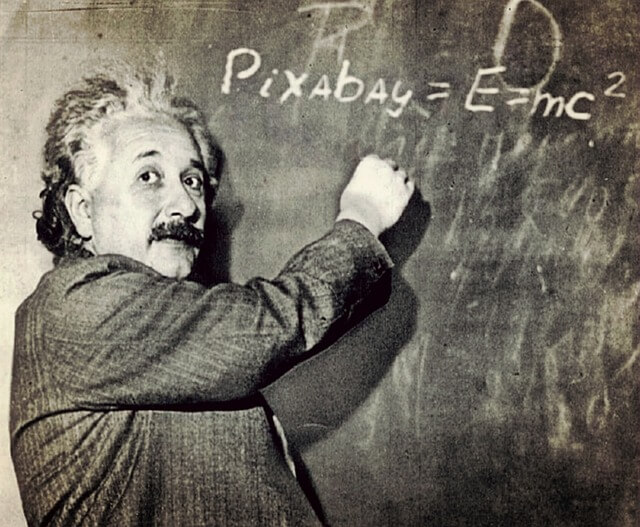If it wasn’t for the ancient Sumerians, Egyptians and Greeks, who laid the foundation of modern math, we would be still stuck in the stone age. Of course there have been incredible mathematicians from literally all parts of the world, but it is these three specific civilizations that have been credited with starting it all.
So did we do any calculations before these ancient geniuses showed up? Or were we just hunters and gatherers that were running around in the mud simply looking to survive?
Contrary to popular belief, this notion is actually false.
Believe it or not, humans were performing advanced calculations 1000s of years before any Sumerian, Egyptian or Greek philosopher showed up.
We were doing math way back in our caveman days. Today the math and science community refers to these calculations found as “Prehistoric math”.
In fact, it was during this time that basic roots of algebra, calculus and every form of advanced mathematics we know today were laid down. Scientists have discovered wooden tablets in Africa that date back over 20,000 years ago with a proper counting system on it. Same types of artifacts and evidence were discovered near Stonehenge. In addition there are thousand of examples of prehistoric math that has been unearthed all over the world.
So math literally started when we first appeared on this planet. It all began with simple calculations using very simple tools. Instead of using a MacBook air like most of us do today, our ancestors had an abundance of sticks and rocks. Guess you can call them the first variation of calculators. Heck even an abacus would be absolutely groundbreaking to our ancestors during this time.
It was during this era that basic addition and subtraction started taking form. Overtime, as things got complicated for human beings (Basic barter trading, building tribes, etc), the need for advanced math got bigger and almost organically, things started to naturally evolve.
Soon the next quantum leap occurred . . . Thanks to the ancient Sumerians.
The ancient Sumerians and Babylonians developed a special kind of numeric system that had a base of 60. Although completely different from the Greeks, the Egyptians and others, this system of using 60 as a base is considered the founding principle of modern mathematics. Basically, this was the first standardized way of using Math. In addition, the Sumerians and Babylonians were already using quadratic equations, geometry and even right angled triangles.
Long before the famous Greek mathematician Pythagoras so called “discovered” it. Needless to say, the ancient Sumerians were on another level. I guess when you don’t have Social media to distract you, you brain can actually come up with some wonderful things.
Moving on to the ancient Egyptians, it is globally believed that it was the mighty pyramid builders who fully created the 10 base number system. A mathematical system that our current modern civilization is based on. Not to mention additional and deeper advances in arithmetic and geometry that the Egyptians left for us. This all makes sense because there is no way you can make those incredible pyramids without any proper math knowledge. After all, it’s not like they could go on Google and hire an architect or a math tutor 🙂
The great Egyptians also introduced us to the modern fractions and multiplication. Plus don’t forget the ever so controversial Golden ratio. Today many archeologist argue that it was the Egyptians who discovered it and if you have any doubts, just look at their architecture. Whether you believe this ‘theory’ or not, it does beg for a good debate.
Soon after (Almost by design), it was the Greeks turn to shine. Making additional advancement in ideas borrowed from the Egyptians, the Greeks took geometry to the next level with new concepts such as Thale’s Theorem and not to mention the introduction to the ground breaking idea of ‘infinity’. Something that was never heard of or even imagined. Long story short, the Greeks systematized what was already known which made it easier for anybody to learn about Math and use it to their advantage.
During these incredible times, as empires conquered each other, knowledge was naturally passed around as well. I guess you can compare (In a really bizarre way) taking over someone’s entire country back in those days to today’s internet. Once you are conquered, you get to learn new things (If you’re left alive of course). This ‘conquering’ increased the exchange of knowledge either by will or by force but at the end of the day, it lead to even more discoveries in the math world. In fact, Alexandria became home to the first first and biggest library in history.
Discoveries such as integers and finding the square root of a number soon followed. Further advancements in Geometry, trigonometry and heck even astronomy started to take place at a rapid pace.
You can’t talk about the Greeks without talking about the Romans who although weren’t big on Math, they did invent the Roman numerals. They were more interested in the practical use of numbers rather than sitting somewhere on a hill in a robe trying to imagine some new numerical miracle. They used what worked and stuck with it. That wonderful mix of practicality and Math brought water to the entire Roman kingdom all thanks to the invention of the aqueducts. To think this was accomplished 3000 years ago is incredible as even to this day, there are many African and South Asian countries who don’t even have water for their people. Ouch!
While this was all taking place in Europe, there were some serious mathematical discoveries happening in South America as well. For example, the invention of the number zero. Yup! It wasn’t just the Indians who created that concept. The funny thing is they both discovered it during the same time period. However, there is no way that they could have made contact back then. You see, it’s these so called ‘coincidences’ that give the show ‘Ancient Aliens’ such credibility. In this case, they definitely deserve some credit.
During this time, the Chinese were making their mark in the field of mathematics as well. They literally perfected the abacus or better known as the world’s first calculator. They also solved some of the world’s most advanced equations and left a solid mark on what we call modern day math.
Going back to the Indian subcontinent, the invention of the decimal came from this region as well. Including linear and quadratic equations. Some serious advanced mathematical discoveries were happening in this part of the world like discovering sine, cosine and other fresh principles.
Later on, when the religion of Islam came about, they used the Hindu system of counting from 1-9 and uncovered something we call Algebra. In fact, Algebra is an Arabic word which sounds more like ‘Al-Jebra’ to be more exact. The Islamic world also took geometry to the next level. It was more out of necessity as Islam forbade any depictions of humans. So the only drawing options muslims were left with were geometrical shapes. Regardless, the geometrical ideas we know today was further refined by muslim Persians and Arabs.
While all this time it was Asia and the Americas that were dominating in education and innovation, the Europeans fell to the dark ages.
Around the 12th century mark, when Europe started coming out of the dark ages (Almost after 800 to 1000 years), trade with Asia opened again. Exchange of ideas and knowledge followed soon and Europe quickly rose to its feet. The Europeans took the Hindu and Arabic numerical system and transformed their own society. It was also during this time that the printing press was invented in Europe which skyrocketed the spread of knowledge within that continent.
As nature would have it, at the same time the printing press was banned in the Islamic world and considered “blasphemous” by the clergymen in the Ottoman (Turkish) Empire. This literally started the ‘dark ages’ all over again but this time the victims were people from the Muslim world and middle Asia.
Math As We Know Today
Europe however was thriving and this led to the beginning of the period known as the renaissance. All thanks to the work of Leonardo of Pisa aka Fibonacci who lit a match that would be never be put out.
It was also during this time that modern Math came to pass. The sign for addition, equal sign, multiplication and many more were all developed during this period.
Later in the 20th century, some more famous Mathematicians came around like the English G.H Hardy and his Indian student Ramanujan who further took things to the next level.
Today, the future of Math only looks up thanks to the continual hard work of present day math geniuses like Terence Tao and the late Maryam Mirzakhani.
Needless to say, the discovery of Math is what separates us from our basic ‘animal’ desires to understanding the true magnificence of this universe.
Also, one thing that is truly fascinating is how by sharing and working together, mankind completely changed it’s fate from a weak and confused life form to being on top of the food chain.
To say that knowledge truly is power is an understatement. Fact is that knowledge is everything and information can change the situation.
There is still an infinite amount of ‘truth’ that needs to be discovered so let’s see what we can uncover in the coming years.
One thing is for sure. . . numbers don’t lie.














